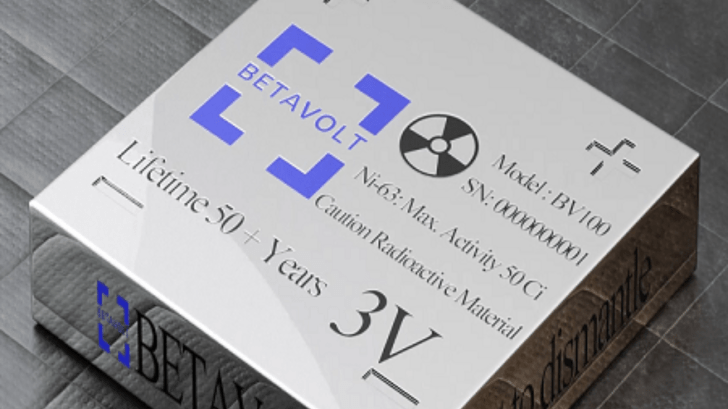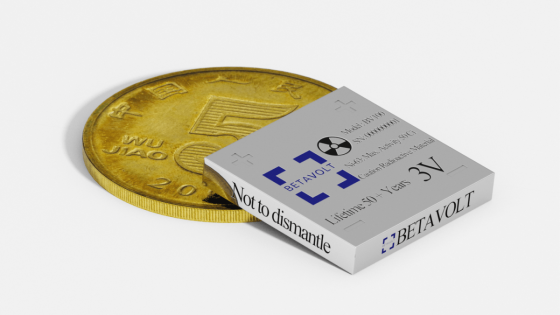This Coin Sized Cell Won’t Require Charging For 50 Years: Betavolt Atomic Battery،
A Chinese start-up claims to have created a battery capable of producing electricity for 50 years straight. According to a report by The Information, Beijing-based company Betavolt has developed a nuclear battery smaller than the size of a coin. The battery is currently in testing and if all goes well, it could soon power battery-powered devices like smartphones, drones, etc.
How the small atomic battery works
The battery depends on the energy emitted by decaying isotopes (or radiation). Using tiny semiconductors, it converts energy into usable electricity. It consists of ultra-thin layers of nuclear isotope Ni-63 and diamond semiconductors. With this chemical composition, it can generate 100 microwatts of power at 3 V. However, this does not meet the power requirements of modern devices. Therefore, Betavolt aims to increase the power to 1W by 2025.
The battery can work in different environmental conditions
The layered design prevents the battery from catching fire or exploding. Additionally, the company claims that the battery can withstand temperatures ranging from -60 degrees Celsius to 120 degrees Celsius, making it weatherproof and, to some extent, heat resistant. In comparison, the lithium-ion batteries in our smartphones, or most gadgets, can only operate from a few degrees Celsius to 45 degrees Celsius.
Betavolt atomic batteries are smaller than a coin

The battery measures 15 x 15 x 5 mm. For reference, the small Betavolt battery is smaller than the popular CR2032 battery (20 x 20 x 3.2 mm). Additionally, the Betavolt Atmoic battery is lightweight, has a long lifespan, and could provide high energy density by 2025. Additionally, it can also operate in extreme weather conditions. However, it stands to reason that one might have concerns about radiation, given the radioactive nature of the battery.
The company states that it does not emit external radiation
Betavolt claims the battery produces no external radiation, making it suitable for medical devices such as pacemakers and cochlear implants. Once the decay period is over (in approximately 50 years), the isotopes transform into a stable isotope of copper, which makes the battery non-radioactive, eliminating any environmental threat. With this, the company also mentions that mass production is expected to begin after obtaining all necessary regulatory clarifications.
Other countries are already working on the technology
While China is the first to claim this technology, scientists in the United States and the Soviet Union are also working on battery miniaturization. While they have already developed such batteries for underwater systems, spacecraft and remote scientific stations, thermonuclear batteries are much more expensive and bulky. China has taken up the technological challenge as part of its 14th five-year plan to revive its economy.
“Betavolt atomic energy batteries can meet long-lasting power supply needs in multiple scenarios, such as aerospace, AI equipment, medical equipment, microprocessors, advanced sensors, small drones and micro-robots.” It could also revolutionize the smartphone industry if it reaches the required power threshold, eliminating the need to carry bulky chargers and powerbanks.
You can follow Smartprix on Twitter, Facebook, Instagram and Google News. Visit smartprix.com for the latest news, reviews and technical guides.
















